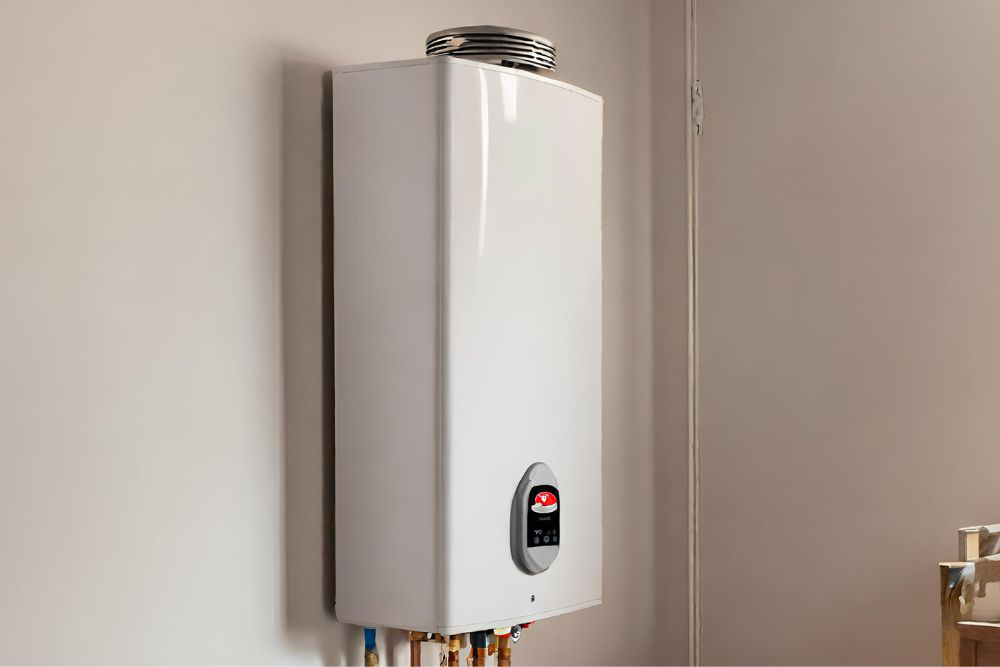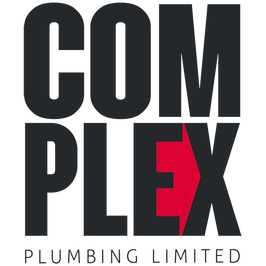
In New Zealand, the installation of gas califonts is regulated to ensure safety and efficiency. These regulations, set by bodies accredited by JAS-ANZ, require all appliances and specific fittings to be certified under various international standards. It is imperative that these appliances meet the outlined standards, which might include compliance with specific labels and notices.
Depending on the appliance type, other certification standards may apply. This is crucial for maintaining safety, promoting energy efficiency, and ensuring the longevity of the appliance. Non-compliance could result in legal repercussions and potential safety risks.
Hence, a thorough understanding of these regulations is paramount for those involved in gas califont installations.
Key Takeaways
- Gas appliances and specific fittings must be certified under international standards.
- Compliance with specific labels and notices is required.
- Proper installation and certification are essential for optimal functionality.
- Building Code compliance is critical for gas Califont installations.
Understanding Califonts and Their Uses
One must understand that Califonts, commonly used in New Zealand, are continuous flow gas water heaters that provide hot water only as needed without the use of a storage tank. These innovative devices are designed with efficiency and conservation in mind, only generating hot water when it’s needed, thereby reducing energy consumption and lowering utility bills.
However, it’s false to assume that Califonts can function optimally without proper installation and certification. The installation and certification of Califonts and other gas appliances are regulated by strict standards and conditions. This ensures that the appliance is safe, efficient, and environmentally friendly.
In New Zealand, certification for Califonts must be done by a JAS-ANZ accredited body, complying with NZS/AS 3645:2010 Part 2. If Califonts are certified under EU Directives 2009/142/EC or 90/396/ECC, they must meet specified standards and conditions related to natural gas appliances.
Additionally, Califonts certified to EN standards must come with English instructions for installation and use. These regulations are not only for Califonts but also apply to other gas appliances, ensuring the safety and efficiency of these devices.
Importance of Gas Califont Regulations
The importance of Gas Califont regulations in New Zealand cannot be overstated, particularly due to the safety implications they carry. These regulations ensure that gas appliances, such as Califonts, are installed and used correctly to prevent accidents and hazards.
Moreover, compliance with these rules not only upholds the safety standards but also brings benefits such as improved appliance efficiency and longevity.
Safety Measures
In light of the critical role they play in ensuring safety, gas Califont installation regulations in New Zealand demand strict adherence to specific conditions and standards. This adherence emphasizes the importance of gas Califont safety, ensuring installations are carried out according to stringent guidelines.
These regulations also consider factors such as voltage supply and category requirements, which are crucial for the efficient functionality of gas appliances. The installation guidelines are paired with comprehensive user instructions in English, providing clarity for the installation process and usage of the appliance.
These instructions play a pivotal role in mitigating risks associated with improper handling or installation. Consequently, the measures in place contribute significantly to safeguarding users, highlighting the importance of these regulations.
Regulations Compliance Benefits
Adhering to these stringent gas Califont installation regulations in New Zealand offers numerous benefits, not least of which is the enhanced safety and efficient operation of gas appliances. Compliance ensures the gas Califont installation process meets rigorous standards, resulting in high-quality, reliable appliances.
Following califont efficiency standards ensures exceptional performance and energy conservation, reducing costs and environmental impact. Compliance also provides clear califont troubleshooting tips, simplifying the resolution of potential issues and enhancing user experience.
Hence, these regulations are crucial to ensuring the safety, efficiency, and reliability of gas appliances.
New Zealand Building Code Compliance
In the context of gas Califont installations in New Zealand, the Building Code compliance is a critical factor.
This section will provide an overview of the code requirements, elaborate on the process of ensuring compliance, and discuss potential regulatory penalties for non-compliance.
Understanding these aspects is fundamental for anyone involved in the installation of gas Califonts, as it directly impacts the safety and legality of the operation.
Code Requirements Overview
Under the New Zealand Building Code, gas califont installations must meet stringent requirements to ensure safety and compliance with national standards. The califont installation process must be certified to NZS/AS 3645:2010 Part 2 standards by a JAS-ANZ accredited body. This certification ensures adherence to califont safety guidelines, outlined in EU Directives 2009/142/EC and 90/396/ECC.
These guidelines stipulate that appliances must be certified to Category I for natural gas appliances and include clear instructions in English. Moreover, califont maintenance tips must be adhered to, ensuring appliances like gas-fired low-intensity infrared heaters and gas storage water heaters function optimally and safely.
Additional certification may be required for specific types of appliances, ensuring robust compliance with all regulations.
Compliance Enforcement Process
Every gas califont installation in New Zealand is subject to a rigorous compliance enforcement process, guided by the New Zealand Building Code, to ensure the highest level of safety and adherence to national standards. This process involves the following steps:
- Review of the gas califont installation process to ensure adherence to approved plans and specifications.
- Verification of certification standards compliance, checking for labels or marks indicating approval by an accredited body.
- Regular inspections during installation to monitor compliance with regulatory enforcement measures.
- Final inspection upon completion of the installation to ensure all aspects meet the New Zealand Building Code.
- Issuance of a Code Compliance Certificate, signifying that the installation has been completed in accordance with the Building Code.
Non-compliance can result in penalties, including fines and potential shutdown of the installation.
Regulatory Penalties Discussion
Significant penalties are imposed in New Zealand for non-compliance with the Building Code during gas califont installation, reflecting the stringent emphasis on safety and regulatory standards. These penalties, referred to as enforcement consequences, certification penalties, and regulatory fines, are designed to ensure compliance with all safety measures. They serve as a deterrent, encouraging adherence to the specified standards and conditions.
Here is a brief look at the potential penalties:
| Non-compliance Issue | Potential Penalty |
|---|---|
| Lack of certification | Certification penalties |
| Non-compliant appliances or fittings | Enforcement consequences |
| Absence of required label and notice | Regulatory fines |
| Non-adherence to required standards | Enforcement consequences |
These penalties underscore the importance of following the New Zealand Building Code for gas califont installations.
Necessary Permits for Installation
In accordance with New Zealand regulations, obtaining the necessary permits is a crucial step prior to the installation of gas Califont appliances. These permits ensure that installation guidelines are adhered to and safety precautions are taken during installation.
The following points outline what to consider when obtaining necessary permits for installation:
- Ensure the appliance or fitting is certified by a JAS-ANZ accredited body with a scope including NZS/AS 3645:2010 Part 2.
- If the equipment is certified under EU Directive 2009/142/EC or EU Directive 90/396/ECC, it must meet specified standards and conditions.
- Appliances certified to EN standards must include English instructions for installation and use.
- Appliances or specified fittings certified by CSA or UL must adhere to specific standards and conditions, including voltage supply and testing methods.
- Depending on the specific type of gas appliance, other certification standards and conditions may apply.
Qualified Professional Installation Requirement
Why is it crucial to have your gas Califont appliance installed by a certified gas fitter in New Zealand?
This is not just a matter of ensuring quality workmanship but aligns with the stringent installation standards set out by recognized accrediting bodies such as JAS-ANZ, EU Directives, Canadian Standards Association, or Underwriters Laboratories.
These installation guidelines are designed to safeguard both the appliance’s performance and the safety of the users.
Certified professionals possess the necessary professional qualifications to meet these standards, including an understanding of the specific conditions and requirements stipulated for different types of appliances.
For instance, appliances certified to EN standards must come with English instructions for installation and use.
Additionally, the certification process ensures that installers are updated on any changes in the installation standards and conditions.
This includes the ability to align with requirements from various standards for different types of gas-fired appliances.
In conclusion, the installation of a gas Califont appliance should not be taken lightly.
It demands a level of expertise that only a certified professional can provide, ensuring the appliance’s safe, efficient, and compliant operation.
Regular Maintenance and Safety Checks
While it is essential to have a gas Califont appliance installed professionally, it is equally critical to ensure its regular maintenance and safety checks are carried out in line with New Zealand’s stringent regulations. These regulations emphasize the need for gas Califont maintenance to be done by a JAS-ANZ accredited body with a scope including NZS/AS 3645:2010 Part 2.
Adherence to these regulations ensures the maximum safety and efficiency of the appliance. The safety checks for gas appliances are set to meet specific standards and conditions. For instance:
- Gas appliances must adhere to specified standards during maintenance.
- Appliances certified under EU Directive 2009/142/EC or EU Directive 90/396/ECC must meet stipulated standards for safety checks.
- Appliances certified to EN standards should include instructions in English for installation and use.
- Gas-fired overhead luminous radiant heaters require regular maintenance and safety checks.
- Portable vapour pressure liquefied petroleum gas appliances also need regular checks.
Non-Compliance: Legal and Safety Implications
Shifting focus to the implications of non-compliance with gas Califont installation regulations, it becomes apparent that the consequences can be both severe and far-reaching, encompassing legal penalties, safety hazards, and potential damage to reputation. The compliance challenges faced by industry professionals are vast, with common violations ranging from failure to adhere to certification requirements to the utilization of non-standard equipment.
Here is an overview of some of these challenges and their potential implications:
| Compliance Challenges | Potential Implications |
|---|---|
| Failure to adhere to certification requirements | Legal action, safety hazards |
| Utilization of non-standard equipment | Voided insurance, financial liability |
| Non-compliance with warranty conditions | Financial responsibility for repairs |
| Common violations of installation standards | Reputational damage, loss of trust |
To mitigate these risks, it is crucial to adhere to industry best practices for gas Califont installation. This includes using only certified equipment, following the set installation guidelines, and ensuring regular safety checks. Non-compliance not only exposes professionals and property owners to legal and safety hazards, but can also affect their reputation and credibility in the industry.

